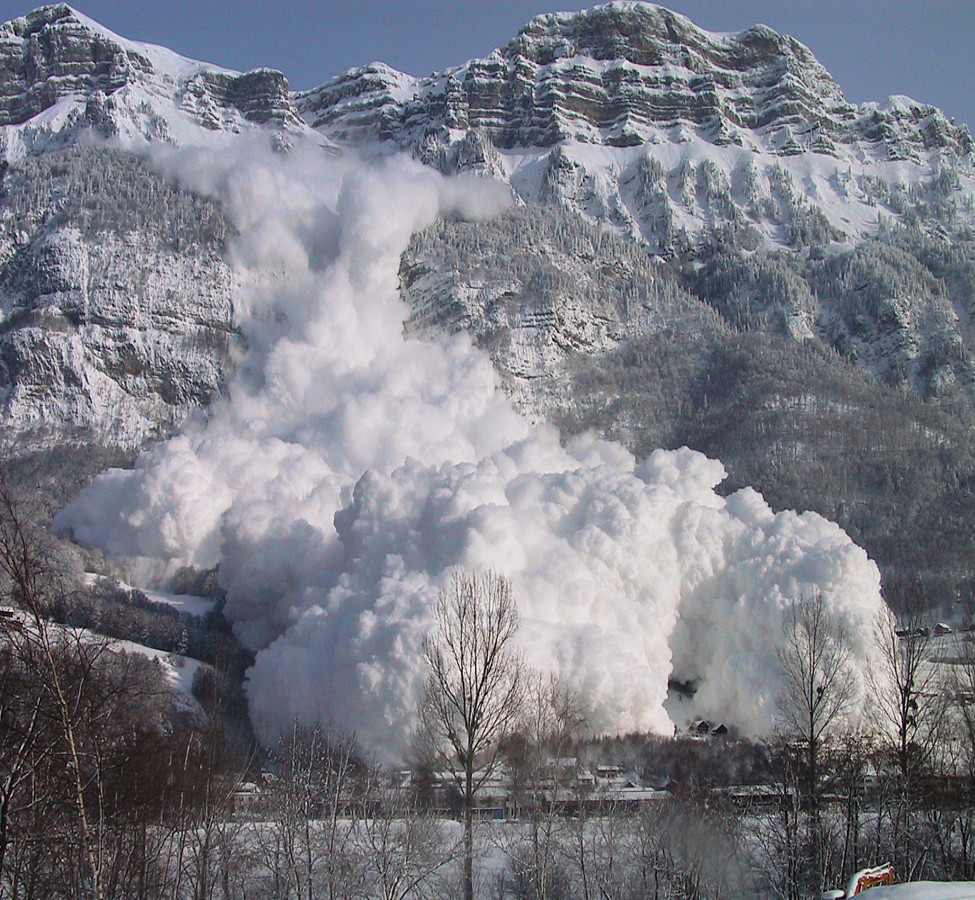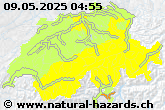1900 - 1999
26th December 1999
All over Switzerland, storm "Lothar"
On 26th December 1999 storm "Lothar" raged all over Switzerland. The damage on buildings alone surmounted CHF 500 millions. Again, the Canton of Berne and Nidwalden were most badly hit by this storm. Due to the storm’s huge expansed almost all Cantonal Building Insurances registered very high storm damage claims.
12 May 1999
Flooding throughout Switzerland
The weather on the northern side of the Alps was particularly wet from 4 to 22 May 1999. From 11 to 14 May and again on 21 May 1999, there was extremely heavy precipitation and, as a result, extensive flood damage arose. The cost of the damage caused by the flooding was approximately CHF 580 million. Similar events in terms of the loss amounts involved and the widespread scale of the flooding were recorded in the years 1978, 1987 and 1993. What was special about this event was the lengthy duration and large spatial extent of the flooding. Extreme monthly means were recorded in German-speaking Switzerland. The volumes of rain that fell corresponded to between 2 and 2.5 times the long-term monthly mean for May. The persistent high temperatures in the period leading up to the rain spell accelerated the melting of the snow in the mountains and caused the water level in the lakes to increase significantly. The intensive rainfall also intensified the melting of the snow. The water levels peaked on 12 May. The flood event of 1910 is more difficult to assess due to the lack of measuring stations at the time; certain facts would indicate, however, that it was comparable with the flood of 1999, which can be classified as a “centennial flood”.
February 1999
Avalanche Winter
Following three periods of intensive precipitation, a state of emergency prevailed in the northern regions of the Swiss Alps. Almost five metres of fresh snow fell across an extensive area between lower Valais and Nordbünden. Around 1,200 “catastrophic avalanches” occurred in February 1999. The avalanche disaster claimed 17 lives and caused material damage totalling over CHF 600 million. Houses were destroyed, trees uprooted, roads submerged and power-line poles bent. The worst avalanche occurred in Evolène in Val d’Hérens (Valais) and claimed the lives of twelve victims. Another five people were killed by avalanches in Bristen (Uri), Geschinen (Valais), Wengen (Bern) and Lavin (Graubünden).
August 1994
Landslide in Falli-Hölli (Fribourg)
More than 30 holiday homes were partly or completely destroyed by a landslide with a volume of 40 million m3 and a surface of 2 km2. Damages around 20 million Swiss Francs.
24th September 1993
Flood in Brig (Valais)
After incessed, intense rainfall the river Saltina in the Brig City overtoped its banks and covered the streets, placed with layers of mud several meters thick – in buildings too. Two women lost their lives. Damages in the area of upper Valais surmounted 650 million Swiss Francs.
18th April 1991 / 9th May 1991
Debris avalanche in Randa (Valais)
Two avalanches with a total volume of 30 million m3. Railway and road connection to Zermatt were being disconnected; the river Vispa was dammed with debris. During storms in June and August 1991 parts of the village Randa were flooded.
24th – 25th August 1987
Storm disaster in the Alps
Heavy rainfall in many regions caused one of the worst storm disasters in the Alps. Damage amounted to some 800 million Swiss Francs (Uri 500 millions, Valais 115 millions, Ticino 120 millions). In Gurtnellen (Uri) the river Reuss washed away the track of Gotthard Railway; the international transit route was disconnected for 18 days. The motorway suffered a similar stroke of fate.
At the end of August 1985
Debris avalanche near Isérables-Riddes (Valais)
The spectacular debris avalanche near Isérables-Riddes (Valais) reached its peak: the mass of some 200,000 m3 rock and mud which already started moving in mid-February raged down into the valley in several surges.
24th July 1981
Debris flow near Domat-Ems (Grisons)
In a camp near Domat-Ems, 6 girls died tragically when a sudden debris flow buried their tent.
19-22 January 1951
Avalanche Winter
An active northwest airflow became established during the night of 15/16 January 1951, and a north-west orographic barrier formed over the Alps channelling the damp maritime air masses from the North Sea towards the Alps. This gave rise to intensive snowfall on the northern slopes of the Alps. Levels of precipitation in excess of 200 percent of normal January levels were recorded in places. The intensity of the snowfall reached 10-15 cm per hour at times. As a result of this extraordinarily long period of snowfall, large parts of the Swiss Alps were affected by disastrous avalanches. Approximately 1,500 avalanches claimed 98 lives and caused extensive material damage. The avalanche winter of 1951 is classified as a 100-year event.
25th January 1946
Earthquake in Sierre (Valais)
Maximum intensity VIII. About 3,500 buildings were being damaged, among them the church of Sierre, which lost its tower top. The earthquake frightened people and even made people panic. There were four casualties.
24th August 1944
Backwater of the river Linth
After incense local thunderstorms a debris flow was triggered in the Durnagel Creek near Linthal (Glarus). About 450,000 m3 of debris produced backwater of the Linth. The torrent like burst of that debris mass causes devastation of reparian areas down to the Walensee Lake. Damage amounted to 2 million Swiss Francs.



